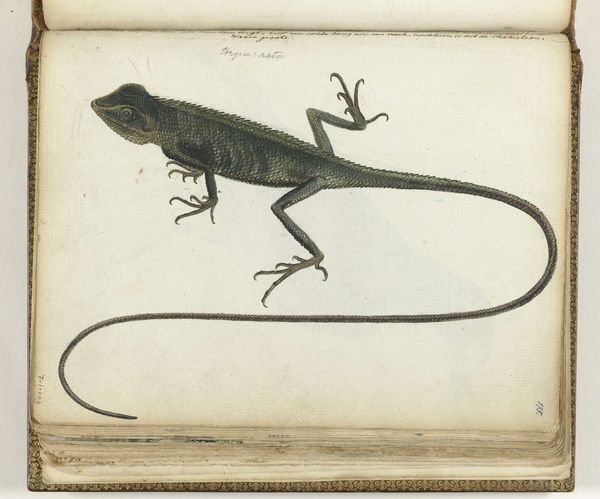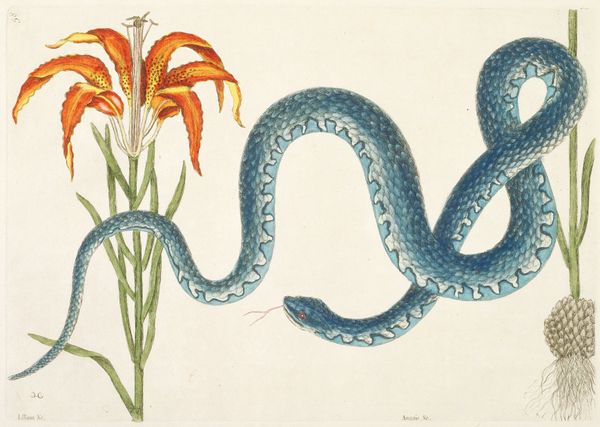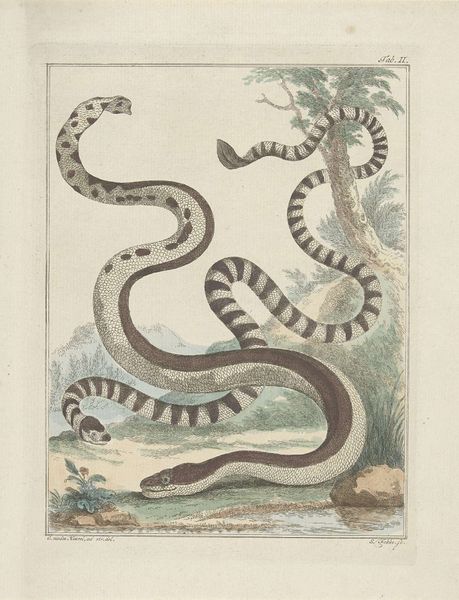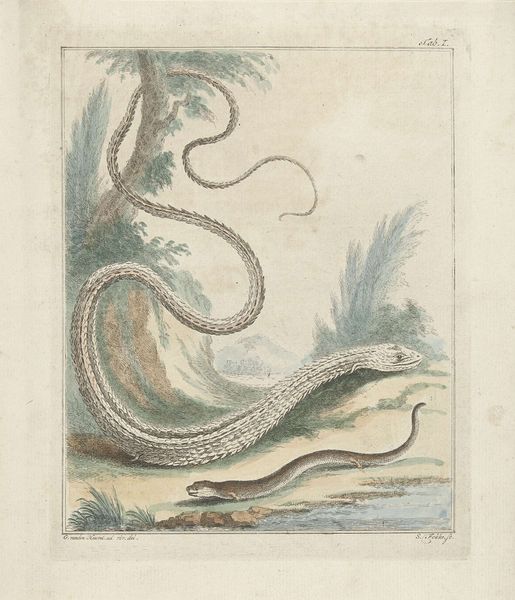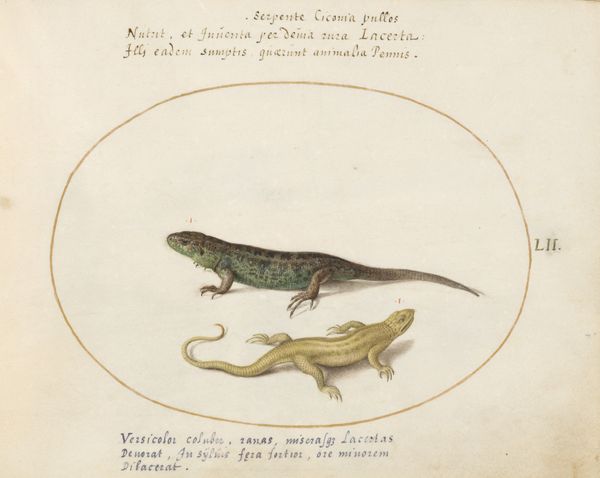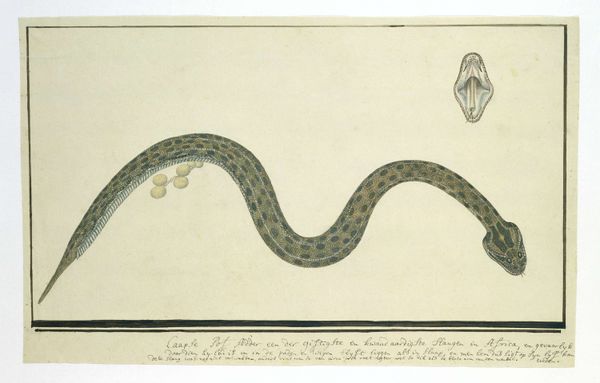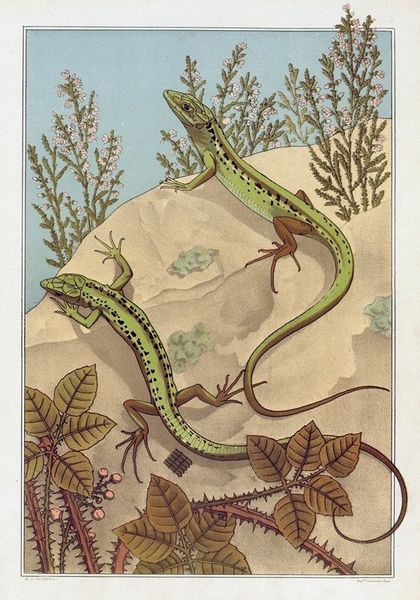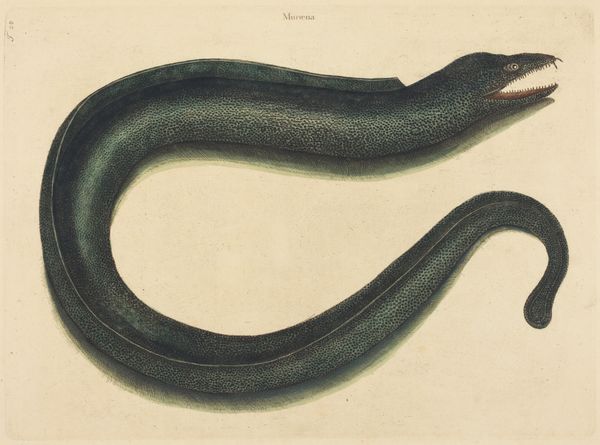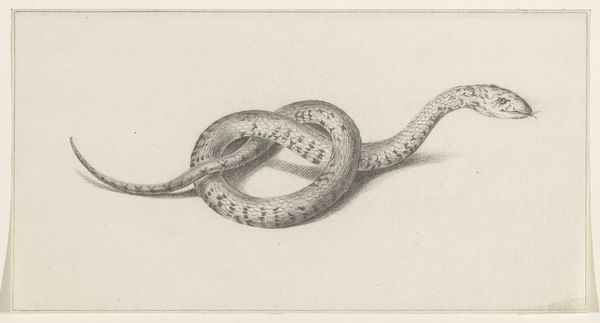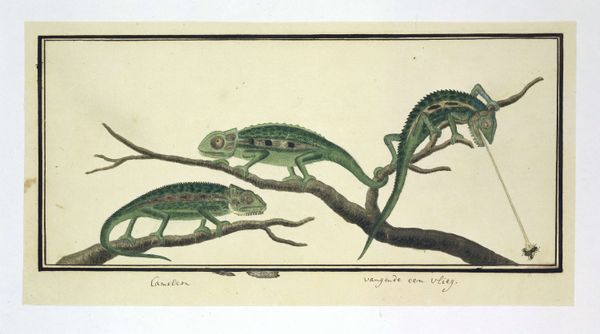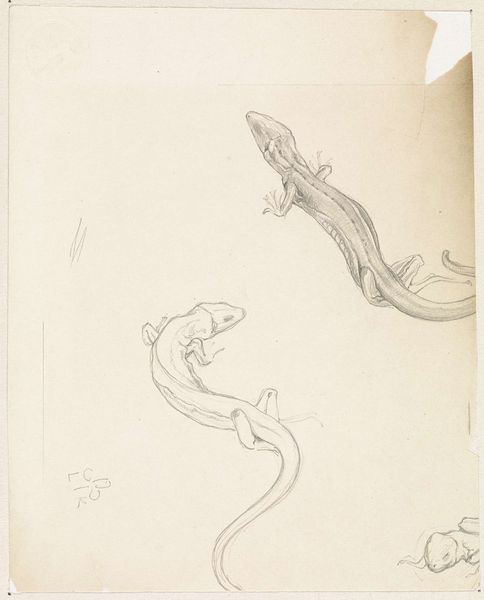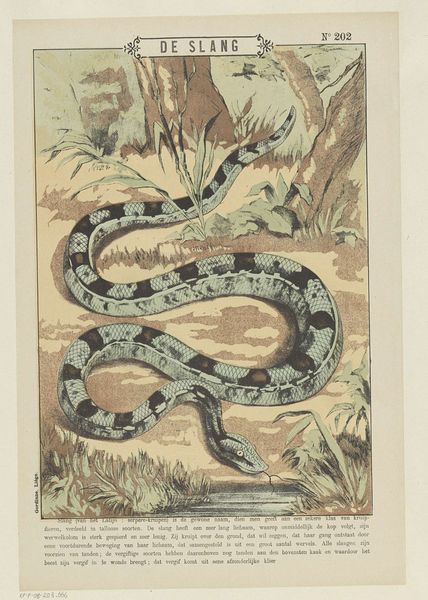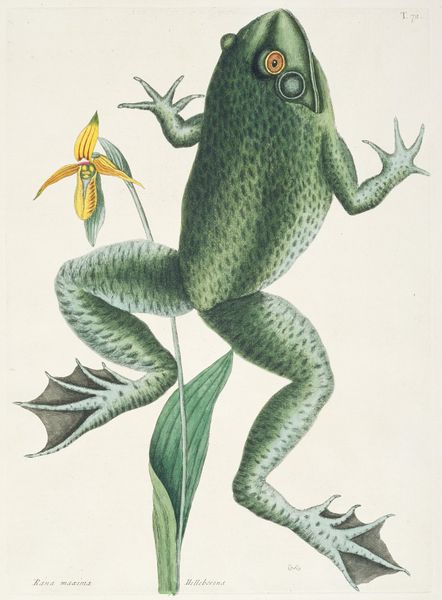
South American smallhead worm lizard, iguana or East Indian tree lizard and pipefish after 1701
0:00
0:00
drawing, coloured-pencil, watercolor
#
drawing
#
coloured-pencil
#
baroque
#
animal
#
landscape
#
watercolor
#
coloured pencil
#
botanical drawing
#
watercolour illustration
#
botanical art
#
watercolor
Copyright: Public Domain
Curator: Welcome. Before us is Maria Sibylla Merian's drawing from after 1701, rendered with watercolour and coloured pencil, entitled "South American smallhead worm lizard, iguana or East Indian tree lizard and pipefish." Editor: At first glance, there's a stillness, an almost clinical precision. The composition directs our eye vertically through the depicted specimens, isolating each one in a way that evokes the traditions of natural history illustration. But I'm intrigued; there’s a very direct quality here that belies the scientific approach. Curator: Precisely. Note the detail in each creature—the meticulous rendering of scales and patterns. Each plane creates dynamic interplay through subtle contrast and visual echoes of tone throughout the artwork. Merian's technical virtuosity serves her commitment to accuracy. She used a variety of media to capture detail and tonal shifts effectively, imbuing an object like neutrality in the documentation. Editor: I find myself drawn to how these images act as historical documents of colonial encounter, cataloguing nature to enforce a sense of ownership and control. The very act of extraction, of isolating these beings against a stark white ground, speaks volumes about a Western impulse to define and dominate the natural world, reinforcing power dynamics inherent in colonial structures. Curator: Your perspective underscores the art’s complicated position. However, the placement of the organisms draws the eye to compositional structure that allows one to perceive visual harmony through formal design alone. The white background has as much structural presence as the carefully painted animals within it. Editor: While I appreciate the formal harmony, I think it essential to read her images as records embedded in the larger, often brutal narrative of colonialism. Her legacy offers us a rich space for considering what is left out, silenced, or even romanticized within this seemingly objective genre of representation. How can these detailed, seemingly scientific images serve the cause of ecological and social justice now, giving voice and visibility to people most directly impacted by ongoing ecocide? Curator: Viewing "South American smallhead worm lizard, iguana or East Indian tree lizard and pipefish" prompts critical inquiry. Editor: And empowers us to be better informed as consumers of art, aware of the worlds shaped and misshapen by our shared histories.
Comments
stadelmuseum about 2 years ago
⋮
When she returned from her two-year expedition to Surinam in South America from 1699 to 1701, Maria Sibylla Merian brought a large number of preserved animal specimens with her – not just insects, but also reptiles and amphibians. She was able to sell them – there was widespread interest among the collectors of such objects in Amsterdam –, but they also served her as models for gouache drawings, for example Obj. No. 1492 Z. Her daughters may also have collaborated on these drawings. The significance of the stars surrounding the pipefish has yet to be explained.
Join the conversation
Join millions of artists and users on Artera today and experience the ultimate creative platform.
